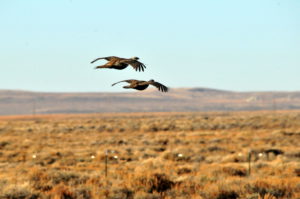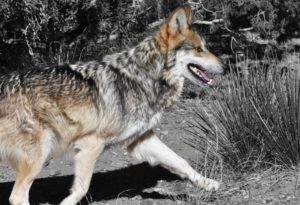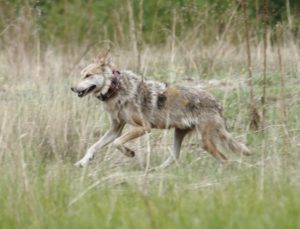For Immediate Release: May 7, 2021
Media Contacts:
Talasi Brooks, Western Watersheds Project, (208) 336-9077, tbrooks@westernwatersheds.org
Jocelyn Leroux, Western Watersheds Project, (406) 960-4164, jocelyn@westernwatersheds.org
BOISE, Ida.—Healthy ecosystems in the northern Rockies have been dealt a crushing blow in the past week. Yesterday, Gov. Little of Idaho signed S. 1211 which calls for the extermination of 90 percent of Idaho’s wolf population. And, on Friday, April 30, Gov. Gianforte of Montana signed into law the last of a series of anti-wolf bills that will allow hunters and trappers to kill unlimited wolves by cruel means to reduce the wolf population in Montana by nearly 85 percent.
“These bills recall the anti-predator hysteria of the early 1900s that originally led to the near-extirpation of wolves from the lower 48 states, and represent a gross overreach by Montana and Idaho’s legislative bodies,” said Jocelyn Leroux, Washington and Montana director for Western Watersheds Project. “Rather than allowing science and agency professionals to be the leading voice in wildlife management, these state Legislatures instead have executed a blatant power grab on behalf of a small group of anti-predator fanatics.”
Idaho’s S. 1211 authorizes year-round wolf trapping on private lands, including during the season when pups and nursing pups and females are most vulnerable. The bill allows killing wolves by all means used to kill coyotes, including night hunting, aerial gunning, and other brutal methods. It also allows an individual to purchase unlimited wolf tags and to use those tags for hunting, trapping, and snaring in any unit where the season is open.
In both Idaho and Montana sportsmen, conservationists, and wildlife managers opposed these bills. However, the lie that wolves are destroying big game populations and the livestock industry has successfully infiltrated the legislative branches of these northern Rockies states and is now guiding wolf management.
In each Idaho and Montana in 2020, there were fewer than 120 confirmed kills of cattle and sheep, an insignificant fraction of the approximately 2.5 million cattle and sheep in each state. Still, Idaho’s S. 1211 directs a bloated budget $800,000 each year to be spent killing wolves, while Montana’s legislation directs Fish, Wildlife, and Parks to pass regulations aimed at heavy-handed wolf population reductions. This myopic focus on killing wolves ignores modern science showing that non-lethal coexistence measures are far better at reducing livestock losses.
Wolves are also not killing all the elk. Both states support robust elk populations with the elk population in Idaho near record highs. Here, the politicized nature of wolf management in the legislatures of Idaho and Montana again embraces rhetoric and ignores the facts.
“The campaign to exterminate wolves continuously disregards facts,” said Leroux. “This type of uncontrolled slaughter is what led to the original listing of gray wolves and will have broad ecosystem impacts.”
These decisions, along with longstanding anti-wolf policies in Wyoming are a stark and timely depiction of why gray wolves still need federal protections. Gray wolves are key to healthy and functioning ecosystems. In Yellowstone, wolves have shifted elk habitat use, releasing aspen groves and streamside willows from overbrowsing and creating a flush of biodiversity benefiting songbirds, beavers, and scavengers.
“The actions of Montana and Idaho this year show that these states are unfit to manage large predators,” said Talasi Brooks, Staff Attorney for Western Watersheds Project. “Federal supervision is necessary to make sure wolf management is based on sound science and not directed by anti-wildlife extremists. We will be keeping a close eye on wolf populations in the northern Rockies.”
####






